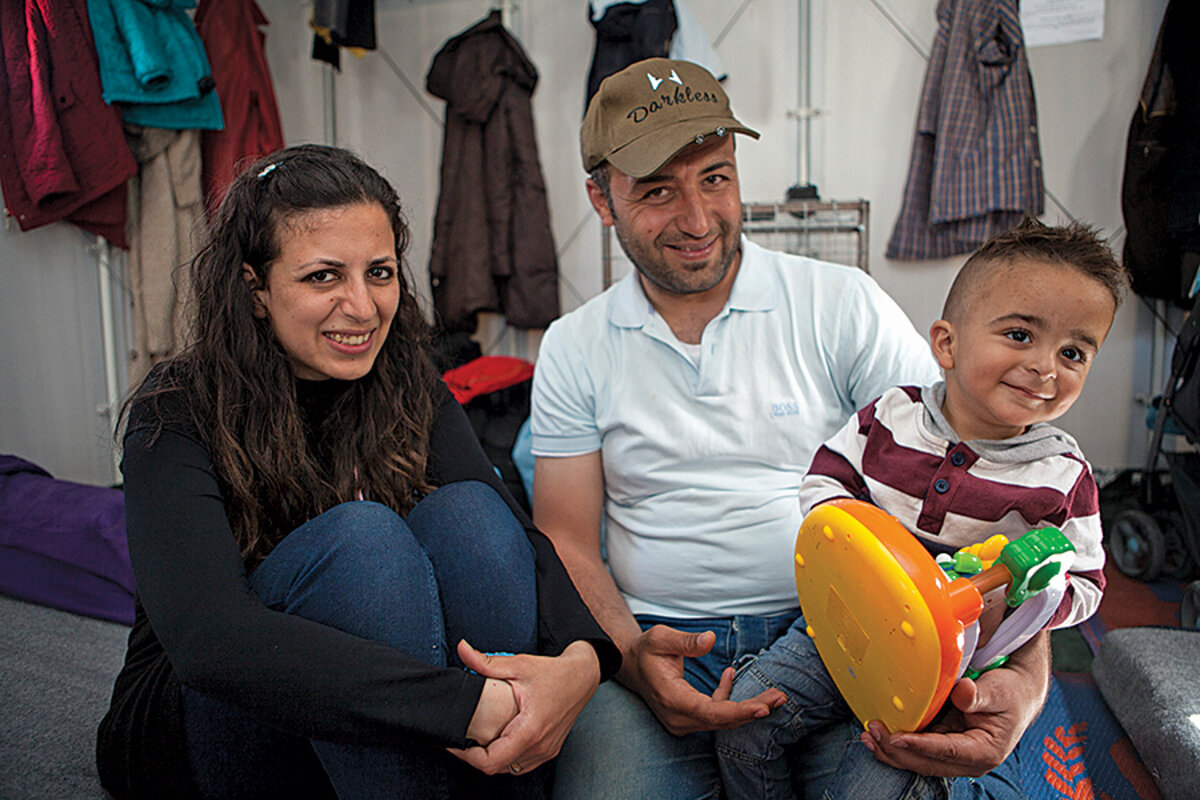Creating 'security' for Europe's new child arrivals
Loading...
| Lesbos and Athens, Greece
It is a symbol of desperation and, they hope, of a better life to come. On the Greek island of Lesbos, which half a million refugees passed through last year, the local garbage dump has turned into a burnt-orange mountain of life jackets.
Many of them are baby-sized, some bearing the words, “Not for use in boating.” An inner tube marked with the characters from “Toy Story” lies on one of the piles. The life jackets are refuse left behind by the interminable waves of refugees from Syria and other countries making the journey across the eastern Mediterranean in their quest to push deeper into Europe.
As Sweden, Germany, and other destination countries face the daunting task of integrating new refugee children, many other minors are just starting to come, in a flow of humanity that is unprecedented in scale and whose members often fall victim to the perils of the pilgrimage. Indeed, the United Nations High Commissioner for Refugees says that on average two children have died per day since September trying to cross the Mediterranean.
Thousands huddle along the Greek border with Macedonia after officials in Skopje shut down the country’s borders in March and closed off the “Balkan route” to northern Europe. Thousands of others are stranded at the Port of Piraeus in Athens, where they sleep in tents and watch giant ferries shuttle in and out of the harbor.
The youths’ need for psychological care is great, says Steve Wilson, a volunteer from Wales trying to keep order on a recent day as the food line grows tense at the port. He says he took young refugees from this camp to a fairground in Athens. One of the preteen boys refused to get on a water ride – he couldn’t bear to see a boat and water after having risked his life making the illegal passage from Turkey to the islands of Greece.
Nour Issa and her husband, Hasan Zaheda, had been stuck in a refugee camp for two weeks after arriving on Lesbos in March. The couple says they fled Damascus to escape Mr. Zaheda’s conscription into the Syrian military. They left in early December with their 2-year-old son, Riad, trying three times to cross the Aegean Sea before they made it to Greece. “I wouldn’t have been afraid if it was just us, but with a child it’s different,” says Zaheda. “There were risks along the whole way.”
“We were conflicted about bringing him,” Ms. Issa says.
“But there is no choice,” interjects Zaheda.
Like all mothers, Issa loves her child intensely. “But sometimes I regret I had him,” she says. “I want life to be better for him. I don’t want him to go through all of this.”
On their way to Turkey, they had to travel through territory controlled by Islamic State to avoid the Syrian authorities that Zaheda was dodging. Issa had to wear a head-to-toe covering, even concealing her eyes, and men and women were separated.
Riad cried, she says, because he didn’t recognize his mother. On their first attempt to cross the sea, the Coast Guard plucked him out of the boat first because he was the smallest. He shrieked as he was separated from his parents.
“Thank God he is 2. He will forget about all of this,” Issa says.
And, in fact, their fortunes may have already turned. They are one of the families that Pope Francis chose to bring back to the Vatican after his recent visit to the refugee camps in Greece.
A study by Edith Montgomery, a psychologist in Denmark, should bring the family hope as well. She followed the outcome of children refugees who came with their families to Denmark from the Middle East in the 1990s. She says she was surprised by the results: Three-quarters showed signs of trauma, from sleep disturbance to depression, when they first arrived; but, significantly, the rate fell to one-quarter after nine years.
The key to their well-being is what happens after they arrive, no matter what tragedy they escaped. “Children are still developing and therefore more susceptible to both negative and positive experi-
ences,” Ms. Montgomery says. “They do not always understand the consequences of what happened and therefore will react to their parents’ reactions. So if the parents are able to provide some sort of security around the child, it will be able to cope with the situation. However, if parents break down, the children might be more affected than adults.”
The same is true for those who are unaccompanied. “As a society we have an important role to help them, to show resilience as well, by helping them, giving them the opportunity to get some control back to live their lives, to get educated, and to learn the language in a safe place,” says Marieke Sleijpen, a psychologist in the Netherlands.







